Siphons for sinks: types, features selection and installation
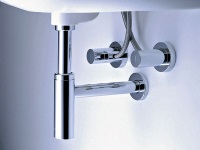
Drain trap - a thing necessary and extremely useful, because it protects our home from unpleasant odors that can penetrate from the sewer, and also prevents the formation of clogs in the pipes. There are usually at least three drain traps in the house. One of them is installed under the kitchen sink, the second under the bathtub, and the third under the washbasin. Our article today is dedicated to the latter type of siphons. From it you will learn about the structure and features of operation of different types of siphons for sink. We hope that this information will help you make the right choice!
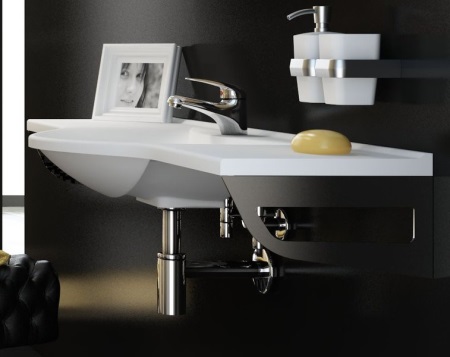
Types
As already mentioned, the drain trap is installed not only under the sink, but also under other types of sanitary equipment, such as a bathtub or bidet. Under each piece of sanitary equipment fits a certain type of siphon, which has its own features.
Drainage trap for the bathtub exists in three versions:
Traditional
The traditional siphon is familiar to everyone, without exception. It allows you to fill the bathtub with water by simply plugging the drain hole with a rubber stopper on a chain. In order to drain the water, all you have to do is pull out the plug.
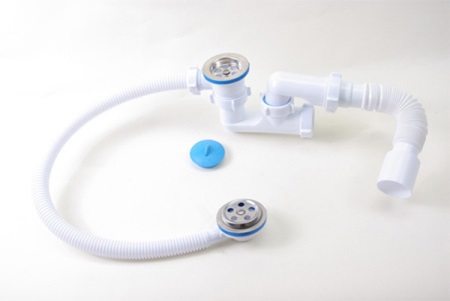
Semi-Automatic
The semi-automatic siphon makes the task of drawing and draining water even easier. It is equipped with a control unit, which is mounted on the outside, on the overflow hole.
In order to activate the overflow drain mechanism, you must press a button, raise a lever or turn a valve on the control unit, depending on its device. As a result, a special cable will lower or raise the plug that closes the drain.
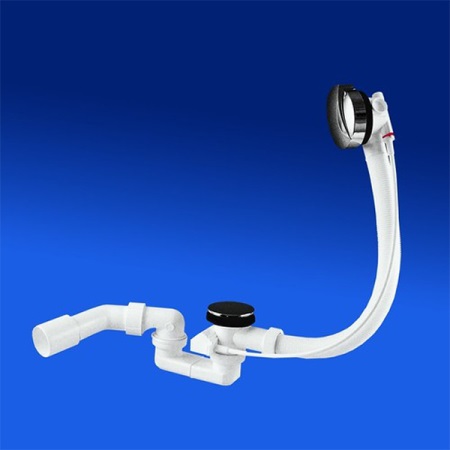
Automatic
Automatic siphon appeared in the market of sanitary ware relatively recently. Its internal structure is almost the same as its predecessors, but the management is done differently.
Drainage hole closes the automated plug-valve. When you press it, the plug lowers and seals the drain, and when you press it again, it rises.
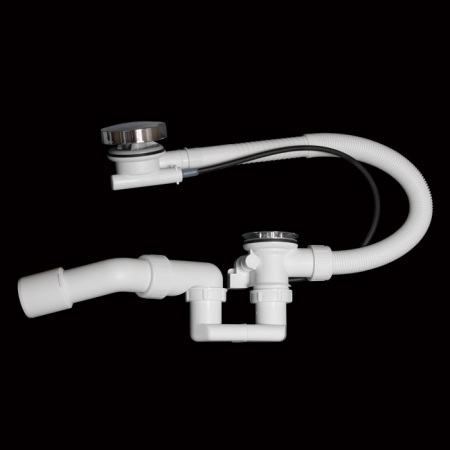
For bidets
A feature of the bidet waste trap is an unusually large bend in the knee, as large flows of water pass through such a siphon. In general, the design of the siphon for the bidet and for the sink is almost the same. More about the types of traps for sinks we will talk in the next section.
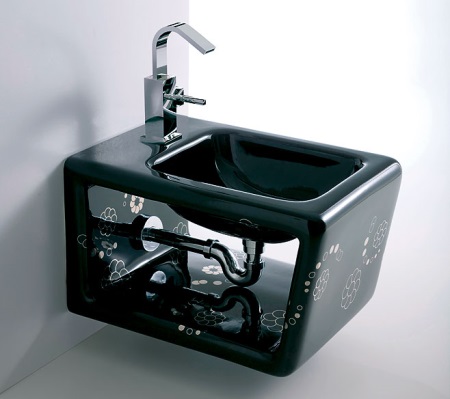
Types
Pipe .
A pipe siphon is a curved metal or plastic pipe. In the bend of the pipe forms a gate for water, but it is not very deep. Therefore, if such a siphon is not used for a long time, the water from it evaporates, causing a specific, musty smell. In addition, the pipe siphon is quite often clogged, resulting in clogs.
Fortunately, it is possible to disassemble the siphon and clean it. However, if you install a pipe siphon not in the bathroom, but in the kitchen, you will have to do this operation quite often. Another disadvantage of this type of siphon is that it takes quite a lot of space, and does not leave almost any useful space under the sink.
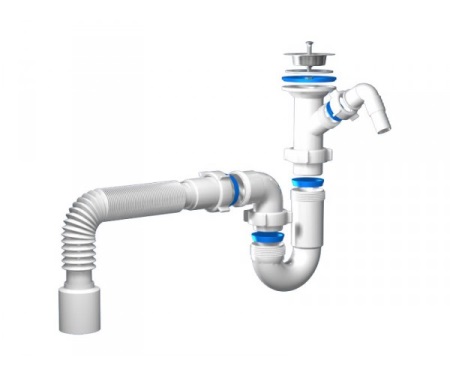
Bottle
Bottle siphon is so called because its middle part is an elongated bulb, resembling the shape of a bottle. In order to install such a trap under the sink, you will most likely need the help of professionals. But you will be able to disassemble and clean some of its elements yourself.
The advantage of bottle traps is that they allow you to connect the drain from the dishwasher and washing machine directly, without an additional outlet into the sewer. And finally, the last argument in favor of this type of siphons: if in the sink drain hole will get some small object, you can always get it by simply unscrewing the lower part of the bulb.
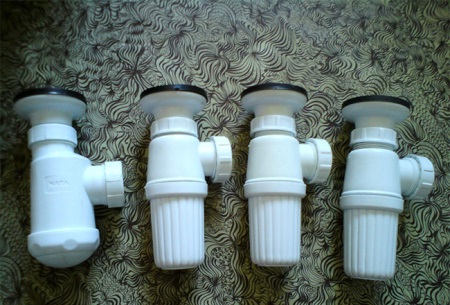
Corrugated
Corrugated trap is a plastic pipe, which, thanks to its folded structure, is able to take any shape. Plasticity is the main advantage of this type of siphons. It can be squeezed into even the smallest space under the sink and connected to the drain in the most convenient way. In addition, the corrugated siphon consists of only two elements: the pipe itself and the connection unit.
Its almost monolithic structure many times reduces the chance of leaks. The disadvantages of this siphon are the following: first, it is not resistant to high and low temperatures. That is, you can not allow boiling water to get into it or the formation of ice, and secondly - the folds are quickly enough clogged with grease, due to which clogs form, so in order to clean the trap, it will have to be completely dismantled.

Dry
Dry siphon appeared on the plumbing market relatively recently. Thanks to its special design, which prevents the stagnation of water, it has been frequently used in dachas, where there is no heating.
When water comes in, the rubber membrane opens and the water flows through it, like a pipe. As soon as the water stops flowing, the membrane compresses again and closes the flow hole.
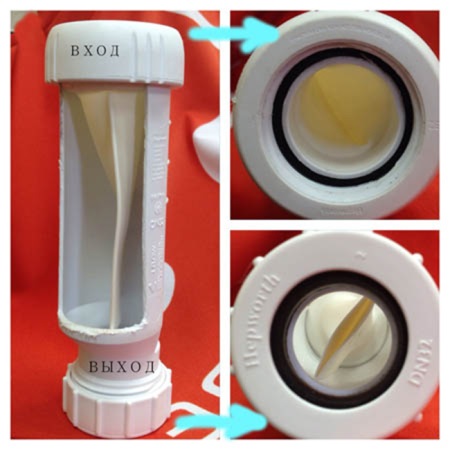
Classification by material
The siphons are made of plastic or metal.
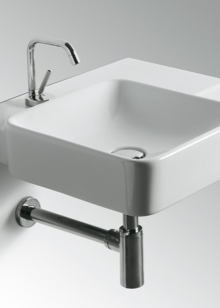
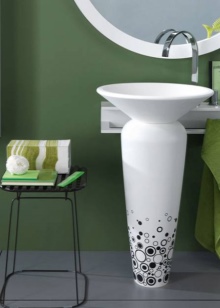
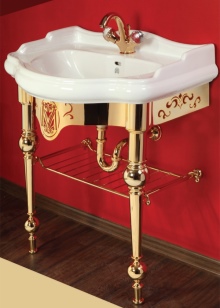
Metal
If you do not plan to close the siphon with a cabinet or mount it inside a pedestal, it is worth choosing a metal product. Traps made of metal look more aesthetic, and more expensive models - really luxurious.
Especially popular are metal siphons with chrome coating. They perfectly harmonize with other chrome interior details in the bathroom: heated towel rail, faucet, curtain rod, door handles. Choosing a chrome siphon, remember that without proper care, the coating loses its original luster very quickly.
The coating of the siphon is usually chosen in accordance with the overall style of the bathroom. So, in a classic or vintage interior, it is worth giving preference to a drain trap with copper, bronze or brass coating.
Plastic
A more modern option is plastic traps. Plastic is a lightweight, strong and durable material, which, in addition, is much cheaper than metal.
Plastic siphon is very easy to install yourself, and, if necessary, and disassemble. Among other things, a significant advantage of plastic models is that no lime deposits form on their walls.
However, if you opted for a plastic trap, take care that it was hidden. It looks very unsightly, so it is more suitable for closed models of sinks, for example, for the sink-tulip.
Choosing
So, the choice of siphon depends on many different factors:
- The type of sink to which the siphon is connected. If the sink is such a model that the space under it is open to the eye, it is worth buying a metal siphon. Plastic siphon does not look so good, so it is better to install it only under the closed models of sinks.
- The availability of free space in the bathroom. If the bathroom is small and every bit of free space counts, then buy a corrugated plastic siphon. It takes very little space and allows you, for example, to install a washing machine under the sink.
- The room in which the siphon will be used. If you choose a siphon in a country house, where there is no water supply in the winter, you will be fine with a drain siphon of the dry type.
- The flow capacity of the siphon. It should be higher, the more household appliances are connected to it and the greater the water pressure in the faucet.
- The width of the section of the siphon. The water flow capacity of the siphon directly depends on it.
- The price of the siphon. Metal models, as a rule, cost more.
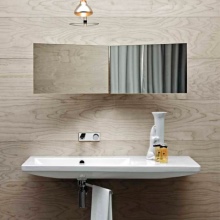
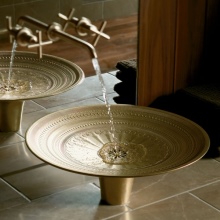
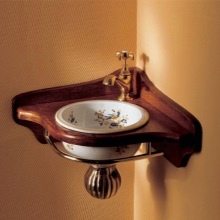
Installation with your own hands
Before you begin to install the siphon, it is necessary to carry out some preparatory work. The first thing, of course, you need to get rid of the former siphon. After it is dismantled, try to clean at least a little of the accumulation of dirt from the sewer pipe. In the future, this will help you avoid the formation of clogs.

Seal the groove of the trap body with a ring gasket and screw parts. On the branch pipe, secure the coupling nut and seal the cone-shaped gasket. Insert the branch pipe into the slot in the body and tighten the nut, but not to the stop, otherwise the siphon will not work. Attach the outlet to the side spigot and secure the connection with a coupling nut, pre-seal with a flat gasket. In the sink drain put a protective grid, and on the other side of the spigot. Don't forget to seal the connection with a rubber gasket! Secure the construction by screwing the coupling screw into the grid.





I think the automatic siphon is the most convenient, albeit expensive.